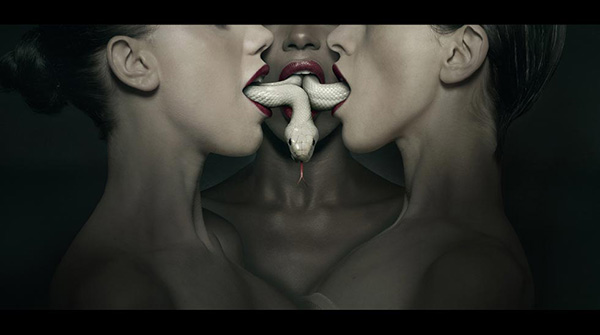
There’s nothing on television quite like “American Horror Story.” From creators Ryan Murphy and Brad Falchuk (“Nip/Tuck,” “Glee”), this strange cocktail of violence, gore, sex, witchcraft, insanity and camp has boggled America’s mind for two seasons and is currently in the middle of its third.
“American Horror Story” is an empire built on shock value — a dangerous trade. You can only use the same gags so many times before people become desensitized to them, and “American Horror Story” knows this well. Murphy, Falchuk and their repertoire of actors, including the often lauded Jessica Lange, have increased the incredulity every season, with season three’s “Coven” culminating in inhumane slave treatment, gang rape and bloody minotaur sex.
At the rate it’s going, the anthology will only continue to be more bombastic and ridiculous to keep topping itself and striving for the unexpected. The styles may vary within each self-contained season, but Murphy often uses that abrasive style to emphasize and provide unique commentary on larger cultural trends, hot-button issues and collective fears like racism, sexism, sexual abuse, mental illness, deadly stalking, unknown magical forces and more.
But with the latest season featuring some of the most sexual, grotesque, offensive and bloody content viewers have ever seen, many are left feeling emotionally and intellectually wanting after all the debauchery is over. Do Murphy and Falchuk have anything left to challenge our minds and not just our gag reflexes?
Some may say no, but the whole concept of “American Horror Story” is to scare, disgust and horrify its audience. Even if the show delves further into just being a series of disturbing scenes and imagery, the audience’s reactions are reason enough for the show to continue.
For anyone who watches the show, it is always an exciting and fruitful conversation topic, and there is certainly something to be said for a show that can portray characters of all different races, persuasions, occupations and time periods and still draw on fears relevant to a modern audience in unexpected ways. In an age where anyone can turn on a television and see acts of graphic violence on the news every day, think of “American Horror Story” as a litmus test for our threshold of sanity — or as one of the reasons it keeps increasing.
A version of this article appeared in the Thursday, Dec. 5 print edition. Ife Olujobi is a staff writer. Email her at [email protected].
























































































































































